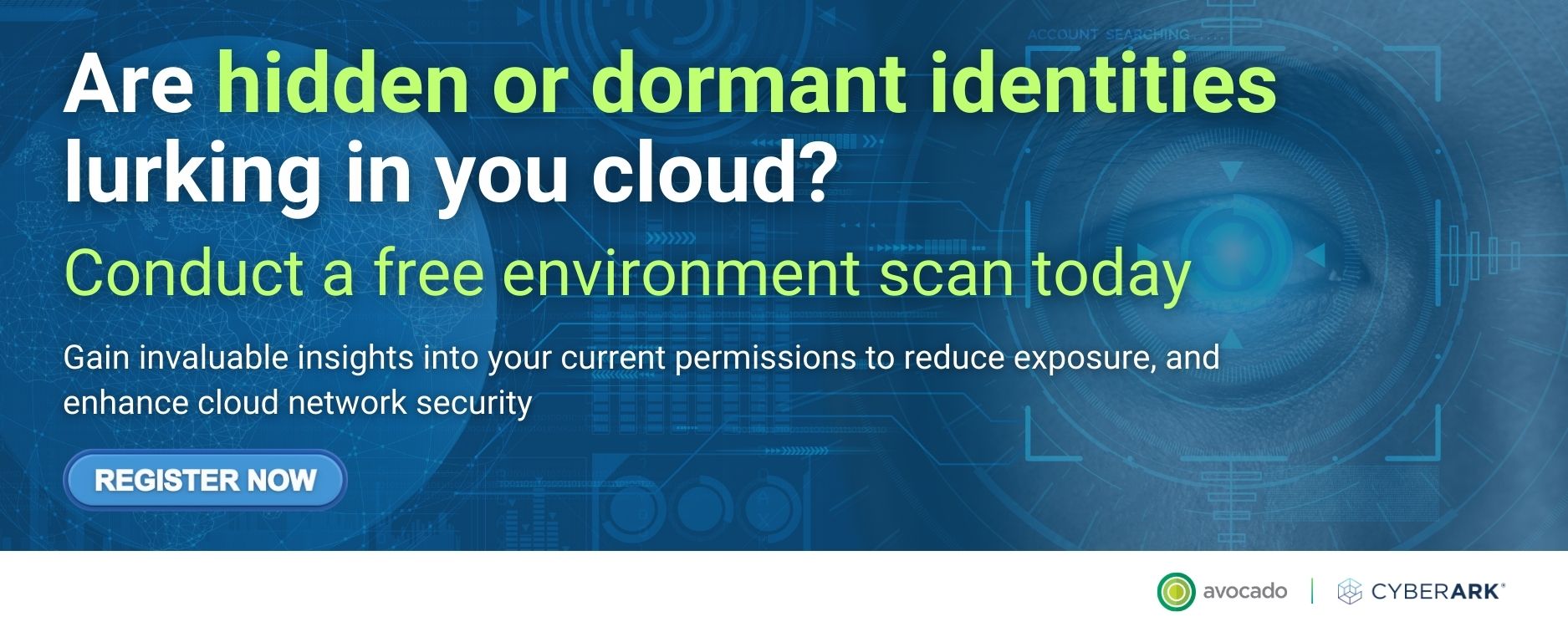The forgotten identities that pose huge risks in your organisation
As organisations increasingly migrate to cloud environments, the complexity of managing every cloud identity grows, often leading to overlooked or ‘shadow’ identities unmanaged or unmonitored user accounts within an organisation. These hidden identities can pose significant risks, as they may have unauthorised access to overly provisioned permissions, and sensitive data and resources. By implementing comprehensive cloud identity discovery, organisations can identify and mitigate these risks, ensuring that all identities are accounted for and properly secured. This proactive approach not only enhances security but also supports regulatory compliance and operational efficiency. In this article, we explore hidden cloud identity types and where to find them.
Challenges of Hidden Identities
Hidden identities in the cloud, often referred to as “zombie identities” or “unused identities,” can lay dormant in an organistion, while still retaining active permissions. They can be exploited by attackers to gain unauthorised access to sensitive information or systems. These identities can be human users, machine identities, or service accounts from previous projects or employees that are no longer in active use but still have access to cloud resources. Understanding and addressing this crucial aspect of cloud security is essential.
“Hidden identities” in your cloud environment generally refer to accounts, credentials, or access permissions that are not readily visible or easily managed, posing a security risk. Hidden identities create the following challenges:
Security Risks
Unused identities can be exploited by cybercriminals to gain unauthorised access to sensitive data and systems. These identities often have permissions that can be leveraged for malicious activities such as lateral movements and unauthorised access to sensitive data.
Compliance Issues
Hidden identities can lead to non-compliance with regulatory requirements, as they may not be subject to the same security controls and audits as active identities.
Operational Inefficiencies
Managing a large number of unused identities can complicate identity and access management (IAM) processes, leading to increased administrative overhead.
Understanding zombie identities and where to find them
Here’s some common types of cloud identities and why they can become hidden without the proper strategies in place:
- Non-Human Identities
- Service Accounts: Used by applications or services to interact with other services or resources. These often have broad permissions and can be easily exploited if compromised.
- Machine Identities: Credentials used by virtual machines, containers, and other infrastructure components to authenticate and access resources.
- API Keys: Used to authenticate applications or services when accessing APIs. If exposed, they can grant unauthorized access to sensitive data or functionalities.
Why they are “hidden”.
- Lack of Centralised Management: Unlike human user accounts, non-human identities are often not managed through traditional Identity and Access Management (IAM) systems, making it difficult to track and control them.
- Difficult to Monitor: Activity from non-human identities can blend in with normal system operations, making it harder to detect malicious use.
- Over-Privileged Access: Non-human identities are often granted excessive permissions, increasing the potential damage if they are compromised.
- Dormant or Orphaned Accounts
- Inactive User Accounts: Accounts of former employees or users who no longer require access but haven’t been properly deprovisioned.
- Orphaned Service Accounts: Service accounts that are no longer in use but still retain access permissions.
Why they are “hidden”:
- Lack of Regular Audits: Organizations may not have processes in place to regularly review and identify inactive accounts.
- Poor Offboarding Processes: When employees leave, their accounts may not be promptly disabled or deleted.
- Shadow IT Identities
- Personal Accounts Used for Work: Employees may use personal accounts on cloud services (like file sharing or collaboration platforms) for work-related tasks without IT’s knowledge.
- Unsanctioned SaaS Applications: Employees may sign up for SaaS applications without IT approval, creating new identities and access points outside of corporate control.
Why they are “hidden”:
- Lack of Visibility: IT may not be aware of these accounts or applications, making it difficult to manage and secure them.
- Bypass Security Controls: These accounts may not be subject to the same security policies and controls as corporate accounts.
Strategies to Discover Hidden Identities
In order to safeguard your cloud environment, it’s crucial to uncover and manage hidden identities that may be lurking within your systems. This can be done with the following approaches:
- Regular Audits: Conduct regular audits of your IAM systems to identify and review all identities. Look for accounts that have not been used for a significant period and assess whether they are still needed.
- Automated Tools: Utilizse automated tools and IAM solutions that can help detect and manage unused identities. These tools can provide visibility into all identities and their activities.
- Access Reviews: Implement periodic access reviews where managers and system owners review the access rights of all identities. This helps ensure that only necessary identities have access to resources.
- Lifecycle Management: Establish a robust identity lifecycle management process that includes the deactivation and removal of identities when they are no longer needed. This process should be integrated with HR and IT workflows to ensure timely updates.
- Monitoring and Alerts: Set up monitoring and alerting mechanisms to detect unusual activity associated with identities. This can help identify potentially compromised or misused identities.
A hidden cloud identity can pose significant security and compliance risks. By implementing regular audits, using automated tools, conducting access reviews, and establishing robust lifecycle management processes, organisations can effectively discover and manage these hidden identities. Proactive management of cloud identities is essential to maintaining a secure and compliant cloud environment.
Unsure where to start? Conduct a free environment scan with Avocado in partnership with CyberArk. Learn more >











